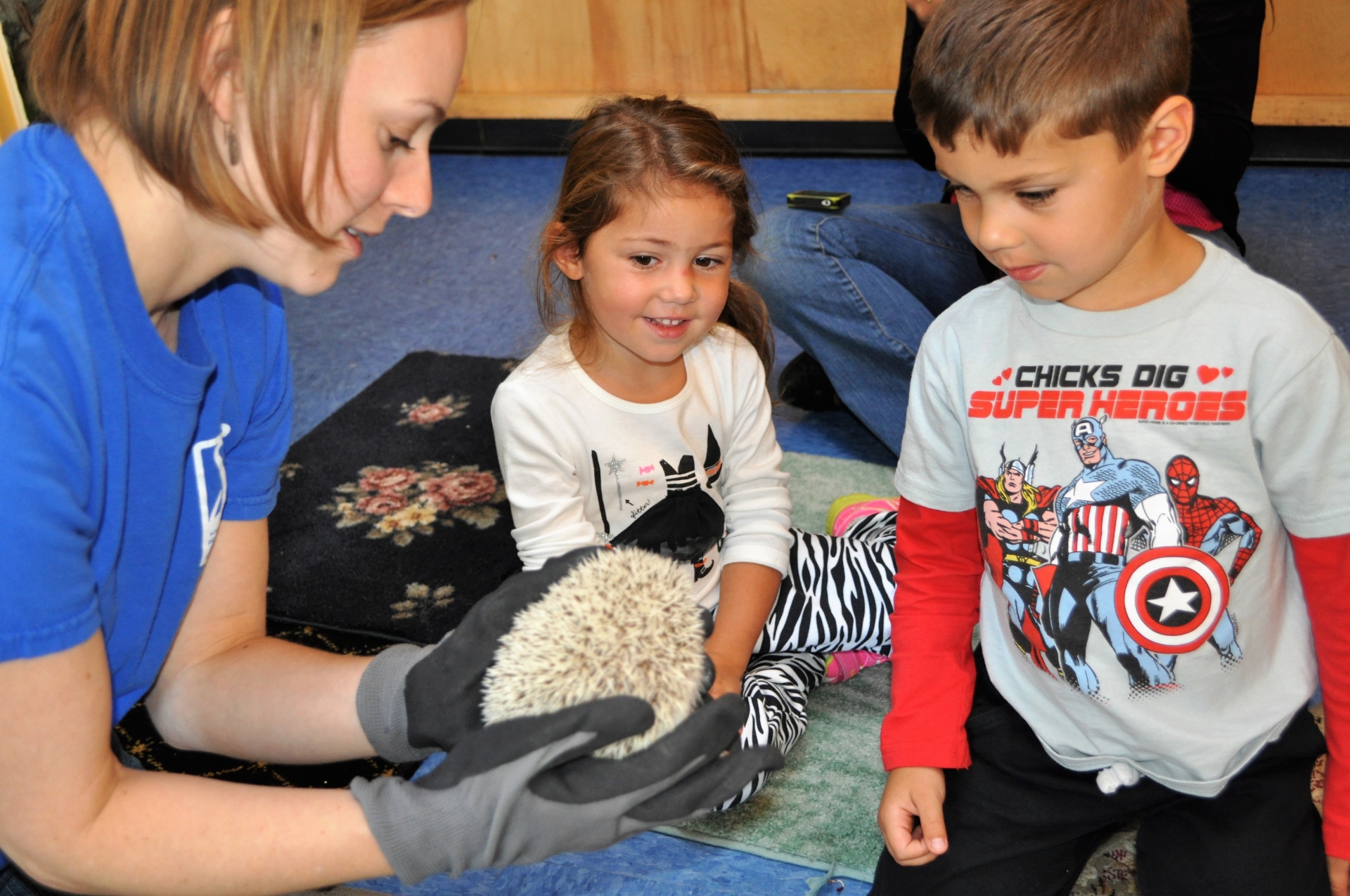Zoo Programs AT YOUR SCHOOL

From programs that meet Next Generation Science Standards to tips for bringing inquiry learning concepts into your classroom, these programs and resources are carefully designed to support you in your teaching efforts, while getting your students engaged and excited about learning.
The Zoo offers a wide variety of formal programs, from September through June, tailored to preschoolers through highschoolers. These standards-based programs are a great complement to your classroom activites and offer valuable experiential learning opportunities.
For questions or to book a Zoo program at your school contact Meg Archer, Manager of School Programs, at Marcher@rwpzoo.org or call (401) 785-3510 ext. 361.
Program Pricing:
September – April
- $185 for the first program
- $150 each additional program
May – June
- $200 for the first program
- $175 each additional program
Summer
- $225 for the first program
- $185 each additional program
We can accommodate 1 class per program (or up to 25 students)
Mileage Fees:
- 20-34miles- $20
- 35-54 miles- $40
Available Programs
Not So Still, Still Life (Kindergarten – High School)
- Animals have been inspiring artists for centuries from the present times to Indonesian cave paintings of babirusa some 39,000 years ago. During this Zoomobile visit, students will have the opportunity to have live animal ambassadors as living models to serve as inspiration for an art project.
- Please note that the teacher is responsible for instruction and materials for the project.
Custom Programs
- Don’t see what you are looking for? We can work with you to tailor a program that meets the needs of you and your students.
Questions? Contact Meg Archer, manager of school programs, at Marcher@rwpzoo.org or call (401) 785-3510 ext. 361.
Our youngest students will have opportunities to observe, ask questions, and make connections to their own experiences while building empathy for animals and the natural world.
Project Cover-Up (Preschool &Pre-Kindergarten)
- Fur? Feathers? Scales? Which animals wear what? Students will compare the coverings of different types of animals and learn how they help them survive.
Up All Night (Preschool &Pre-Kindergarten)
- Just as we go to sleep at night, a whole new world of animals is waking up! Students will explore how these animals use their senses to help them survive at night.
Getting Around (Preschool & Pre-Kindergarten)
- Some animals swim, some fly, some run. Students will learn how different animals ”do the locomotion”.
What’s for Lunch? (Pre-Kindergarten & Kindergarten)
- Plants? Bugs? All animals need food in order to live and grow, but who eats what? Students will explore the different ways animals get there energy and sort animals based on what they eat.
Homes around the World (Pre-Kindergarten & Kindergarten)
- You can find animals everywhere from steamy jungles to bone dry deserts. Students will sort animals into their habitats by looking at the special characteristics they have to survive.
Elementary students will be encouraged to observe and make inferences as they figure out how the function of structural and behavioral adaptations help animals survive and meet their needs.
Creatures of the Night (Grade 1 & 4)
- Just as we go to sleep at night, a whole new world of animals is waking up! Students will explore the special adaptations nocturnal animals have for surviving at night.
Wild Adaptations (Grades 1 – 4)
- From the freezing tundra to arid deserts, animals have managed to make their homes everywhere. Students will explore the structural and behavioral adaptations that help animals survive.
Insects (Grades 1 & 3)
- What makes an insect an insect? First grade students will explore the special characteristics that make an insect an insect and third grade students will explore the unique life cycles of insects.
Rainforest Adaptations (Grades 1 – 4)
- Students will explore the four layers of the rainforest and the structural adaptations that help animals survive in each.
V is for Vertebrate (Grades 1 & 4)
- What makes a mammal a mammal and a bird a bird? Students will learn how scientists classify animals based on their structural and behavioral adaptations.
Our oldest students will be encouraged to observe and make inferences as they dive deeper into understanding ecosystem dynamics, interdependant relationships, and the role of humans.
Web of Life (Grade 5 and Middle School)
- A healthy ecosystem is one in which multiple species of different types are each able to meet their needs in a relatively stable web of life. Students will examine how organisms in a local ecosystem are interrelated.
Rainforest Web of Life (Grade 5 and Middle School)
- A healthy ecosystem is one in which multiple species of different types are each able to meet their needs in a relatively stable web of life. Students will examine how organisms in a tropical rainforest ecosystem are interrelated.
Oh Give me a Biome (Middle School)
- Students will use NASA data maps to identify biomes around the world and will look at how animals are adapted to live in each.
Symbiotic Symphony (Middle School)
- Animals depend on each other for survival. Whether these relationships are mutually beneficial or not, these dependencies are an important part of an ecosystem.
Winning by a Neck (Middle School)
- Why do giraffes have such long necks? Many theories exist, but they all refer back to “natural selection. Students will examine how certain valuable characteristics are passed down through generations to help a species survive.
Species Survival Plan (High School)
- Zoos play an important role in the survival of species and are often referred to as “modern day arks”. This program will walk students through the process of pairing animals for breeding to preserve genetic diversity as part of a comprehensive species survival plan.
*NEW* Climate Change 101 (Middle and High School)
- This 4-hour workshop will cover heat trapping gases, carbon cycle, lines of evidence, impacts on ecosystems and animals, and solutions.

